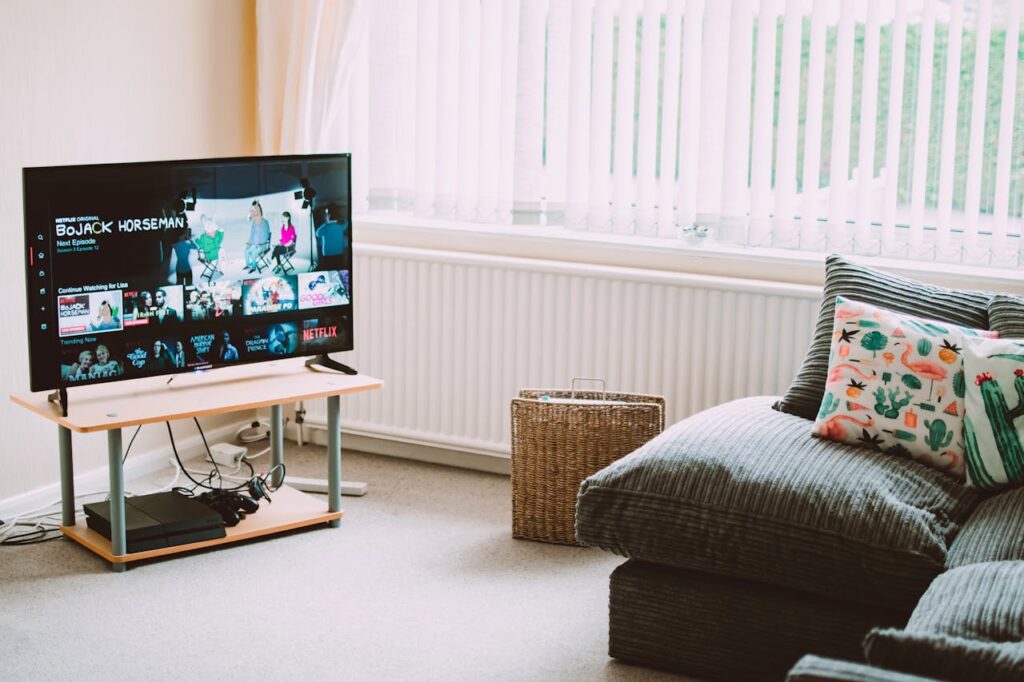In today’s digital age, a clear and stable television signal is essential for enjoying uninterrupted programming. With technological advancements and the shift to digital broadcasts, maintaining strong reception is crucial. Yet, interference can still plague even the most sophisticated setups. This article will explore effective strategies to prevent interference with TV signals, ensuring you achieve the best viewing experience.

Photo by Lisa Fotios: https://www.pexels.com/photo/turned-on-flat-screen-smart-television-ahead-1444416/
Understanding TV Signal Interference
TV signal interference occurs when unwanted disruptions affect the quality of the broadcasted signals you receive, leading to issues like pixelation, sound distortion, or complete signal loss. Interference can stem from various sources, including physical obstructions, electronic devices, or even atmospheric conditions. Identifying the cause of interference is the first step towards mitigating its effects and restoring optimal viewing quality.
Choosing the Right Aerial
Selecting an appropriate aerial for your location is paramount in preventing signal interference. Factors like your distance from the broadcasting tower, the geographical terrain, and the presence of tall buildings or trees can influence signal strength. Here are some considerations when choosing the right aerial:
Outdoor versus Indoor Aerials: Outdoor aerials generally offer better reception than indoor aerials due to their elevated position and lack of indoor obstructions. However, indoor aerials are more convenient and easier to install.
Directional versus Omni-directional: Directional aerials focus on signals from a specific direction, which can be beneficial if most broadcast towers are located in the same area. Omni-directional aerials, on the other hand, capture signals from multiple directions, suiting areas with dispersed transmission points.
Gain and Frequency Range: Aerials come with different gain values and frequency ranges. Higher gain aerials can pick up weaker signals, but they may also amplify noise. Ensure that the aerial you choose covers the necessary frequency range for Freeview or other digital broadcasts in your area.
Consulting with a professional aerial installer can provide personalised recommendations based on a detailed survey of your location.
Proper Aerial Installation
Even the best aerial can underperform if not installed correctly. Proper installation ensures that the aerial is positioned to capture the strongest possible signal with minimal interference. Key installation tips include:
Height and Elevation: Positioning the aerial at a higher elevation reduces obstructions and improves signal reception. Mounting the aerial on a rooftop or attic can yield better results compared to lower placements.
Orientation and Alignment: Proper alignment towards the nearest transmission tower is crucial. Using a signal strength meter can help with precise positioning to maximise signal quality.
Secure Mounting: Ensure that the aerial is firmly mounted to withstand adverse weather conditions. Loose or wobbly aerials are more susceptible to signal fluctuations.
Cable Considerations: Use high-quality coaxial cables to minimise signal loss and interference. Keep cable lengths as short as possible and avoid sharp bends or kinks, which can degrade signal quality.
Minimising Electronic Interference
Electronic devices within your home can cause considerable interference with your TV signal. Appliances, wireless devices, and even dimmer switches emit electromagnetic signals that may disrupt TV reception. To minimise electronic interference:
Separation of Devices: Maintain a reasonable distance between your TV setup and electronic devices such as routers, cordless phones, and microwave ovens. Physical separation reduces the chance of electronic signal overlap.
Shielded Cables: Using shielded coaxial cables can help protect the TV signal from electromagnetic interference. These cables have additional insulation to counteract ambient electronic noise.
Switching Off Unnecessary Devices: Power down or disconnect unused electronic devices that may contribute to interference. For instance, switching off a rarely used Wi-Fi router during TV viewing can mitigate potential disruptions.
Weather Considerations
Atmospheric conditions can also impact TV signal quality. Rain, wind, and heavy cloud cover can interfere with signal propagation. While weather conditions are uncontrollable, there are measures to lessen their impact:
Weatherproofing Aerials: Ensure that your outdoor aerial is weatherproofed to withstand rain and wind. Waterproof covers or enclosures can protect connections and reduce signal loss during adverse weather.
Regular Maintenance: Periodically inspect your aerial for any damage or wear caused by weather conditions. Replace corroded parts and tighten loose connections to maintain optimal performance.
Addressing Physical Obstructions
Physical obstructions such as buildings, trees, and terrain can significantly affect TV signal strength. Dealing with these obstacles involves:
Aerial Placement: Position the aerial in a location with a clear line of sight to the transmission tower. Avoid placing the aerial behind large buildings or dense foliage.
Tree Trimming: If trees in your vicinity obstruct the signal path, trimming branches can improve signal reception. However, ensure compliance with local regulations regarding tree trimming and property boundaries.
Alternative Locations: If physical obstructions are unavoidable, consider exploring alternative locations on your property for aerial installation. Sometimes, a different angle or a higher elevation can make a substantial difference.
Upgrading Equipment
Older TV equipment or cables may not be compatible with current digital signals, leading to reception issues. Upgrading to modern equipment can resolve these problems. Consider the following upgrades:
Digital TVs and Set-Top Boxes: Ensure that your TV and set-top box are digital-compatible. Analogue devices may struggle with digital signal reception.
High-Quality Coaxial Cables: Modern coaxial cables with better shielding and lower signal loss ratings can improve overall signal quality.
Signal Boosters and Amplifiers: In areas with weak signals, a signal booster or amplifier can enhance reception by increasing signal strength before it reaches the TV.
Professional Assistance
Sometimes, despite best efforts, signal interference issues persist. In such cases, seeking professional assistance can be invaluable. Professional aerial installers have the expertise and equipment to diagnose and resolve complex interference problems. They can:
Conduct Signal Surveys: Comprehensive signal surveys identify the strength and quality of signals at various locations on your property, guiding optimal aerial placement.
Install High-Quality Equipment: Professionals can recommend and install superior-quality aerials, cables, and amplifiers tailored to your specific needs.
Troubleshoot Interference Issues: Trained technicians can identify the sources of interference, whether electronic, physical, or environmental, and provide targeted solutions.
Conclusion
Preventing TV signal interference involves a combination of appropriate equipment selection, proper installation, minimising electronic and environmental factors, and professional guidance.
By understanding and implementing these strategies, you can optimise your TV signal, ensuring a clear and enjoyable viewing experience. Regular maintenance and staying abreast of technological advancements will further safeguard against future interference, keeping your entertainment uninterrupted.

